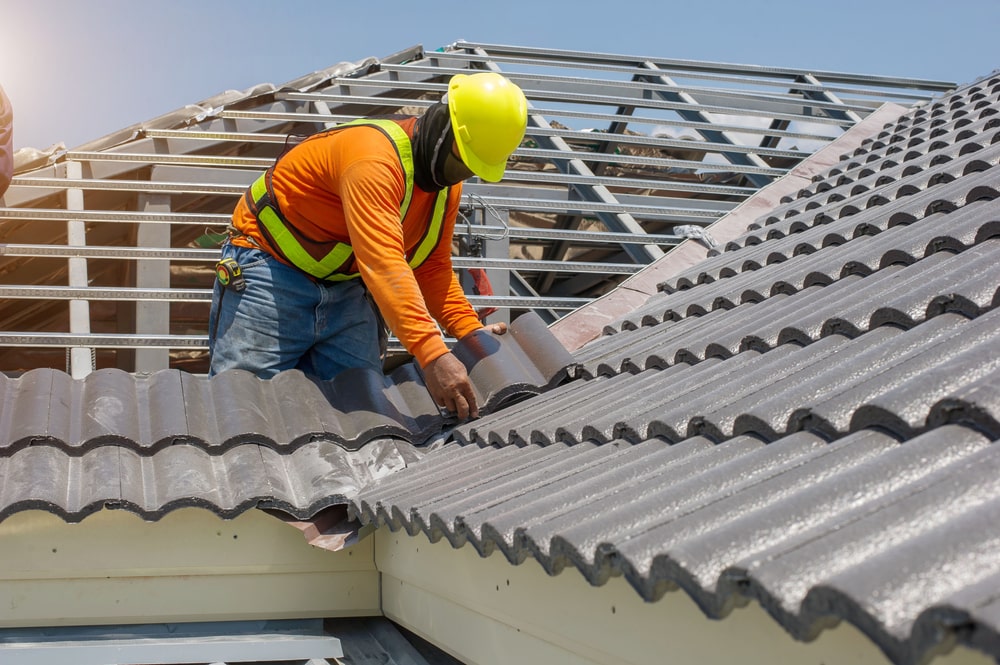A Comprehensive Look at Roofing Companies Gainesville Locals Recommend
Best Practices for Ensuring Correct Roof Covering Ventilation
A balanced consumption and exhaust air vent ratio, commonly 1:300, plays an essential duty, with intake vents preferably put at the reduced edge of the roof for amazing air entry and exhaust vents at the peak for warm air departure. Keeping insulation away from vents is crucial to stop airflow restriction.
Understand Ventilation Fundamentals
Correctly understanding ventilation essentials is crucial for making sure the long life and effectiveness of roof. Efficient air flow alleviates dampness build-up and temperature extremes in the attic room, both of which can lead to considerable structural damages gradually. A well-ventilated roofing aids in preventing typical issues such as mold growth, timber rot, and ice dams, which can compromise the stability of the roof products and the underlying frameworks.
The primary objective of ventilation is to assist in the motion of air, permitting a regular exchange in between the interior and exterior settings. This equilibrium is accomplished with a combination of intake and exhaust vents that interact to maintain optimal air movement. Consumption vents, generally located along the eaves or soffits, allow fresh air to enter the attic room room, while exhaust vents, usually positioned at or near the roof ridge, make it possible for warm, damp air to get away.
Secret aspects affecting the efficiency of roofing system ventilation include correct positioning, appropriate sizing, and making sure that both consumption and exhaust vents are unobstructed. Normal assessment and maintenance are critical to identify potential clogs, damage, or inadequacies in the ventilation system, thereby securing the roofing system's efficiency and sturdiness.
Kinds Of Roofing System Vents
Roof vents play a crucial role in keeping reliable attic air flow and, by extension, the general wellness of the roof system. Numerous sorts of roofing vents are offered, each with unique benefits tailored to certain roofing demands. Ridge vents, as an example, are set up along the roof covering's top, permitting warm, moist air to escape from the attic room. They offer continuous air flow and blend seamlessly with the roofline, making them both efficient and cosmetically pleasing.

Soffit vents are mounted under the eaves and job in tandem with roof vents to make sure a balanced intake and exhaust system. By enabling cooler air to enter from below, soffit vents promote the expulsion of hot air with top vents. Gable vents, located on the exterior walls of the attic room, offer one more reliable option, specifically in homes with gable roofing systems.
Analyze Your Present Ventilation

Following, take into consideration the age and condition of your roofing products and air flow components. Older systems might not follow current building regulations or may have deteriorated with time, lowering their performance. Conduct a complete assessment to determine any kind of indicators of wear and tear, such as corrosion, damage, or voids that might compromise the system's performance.
Furthermore, determine the attic temperature level and moisture degrees. Heats and humidity can show poor ventilation - roofing companies gainesville florida. Make use of a hygrometer and thermostat to obtain precise readings, contrasting them with outside problems. Persistent discrepancies recommend potential concerns that require dealing with.
Installation Best Practices
Efficient installation of roofing ventilation systems is paramount for guaranteeing optimal performance and durability. Appropriate installation begins with comprehending the certain air flow demands of the structure and the roof it covers. This includes computing the right proportion of consumption to tire vents, normally sticking to the 1:300 rule, which states one square foot of ventilation for each 300 square feet of attic floor space.

The placement of vents is just as important. Intake vents need to be set up at the roof covering's lower side, typically in the soffits, to allow amazing air to enter. Exhaust vents, on the various other hand, should be installed near or at the roof's height to help with the leave of cozy, damp air. This creates an all-natural air movement that aids preserve temperature and dampness equilibrium within the attic room space.
Seal all vent links thoroughly to stop air leaks and potential water seepage. Use high-grade materials and comply with producer standards to ensure resilience and effectiveness. Furthermore, incorporating ridge vents with baffles can significantly improve airflow effectiveness by protecting against wind-driven rain and snow from going into the attic room.
Ultimately, accurate installment of roof air flow systems minimizes prospective issues such as mold growth, ice dams, and structural damage, making certain the roof covering's integrity and the structure's total health and wellness.
Routine Maintenance Tips
Uniformity in maintenance practices is fundamental to ensuring the long-lasting performance of roof covering air flow systems. Regular examinations are crucial, preferably carried out biannually-- in the springtime and loss. Throughout these look at this now inspections, make sure that vents are devoid of debris, nests, and other obstructions that could impede airflow. Examine for any indicators of dampness build-up or mold and mildew, as these can show inappropriate ventilation or leakages (gainesville fl roofing companies).
Cleansing the vents is another necessary job. Utilize a soft brush or a vacuum cleaner to eliminate dust and debris from consumption and exhaust vents. Beware not to damage the vent displays or louvers during the procedure. Furthermore, check the attic area for any signs of water damages, which could endanger the integrity of the roof.
Proper insulation is just as crucial. Ensure that attic insulation does not block the vents, as this can severely restrict air movement. If any kind of insulation has moved or cleared up, reposition or replace it to preserve a reliable barrier.
Finally, change any kind of damaged or missing components immediately. Busted vents, split shingles, or worn-out blinking can web link all add to poor air flow and needs to be resolved right away. Normal upkeep ensures that the roofing air flow system functions optimally, thus expanding the life expectancy of the roofing itself.
Verdict
Making sure appropriate roof ventilation is vital for keeping the effectiveness and sturdiness of a roofing system. Adherence to the 1:300 consumption and exhaust vent proportion, combined with the strategic positioning of vents, is important.
A balanced consumption and exhaust vent proportion, commonly 1:300, plays a pivotal duty, with intake vents ideally put at the lower edge of the roof covering for see it here trendy air access and exhaust vents at the top for cozy air exit. Consumption vents, commonly situated along the eaves or soffits, permit fresh air to get in the attic room area, while exhaust vents, often located at or near the roof covering ridge, enable hot, moist air to escape.
Soffit vents are set up under the eaves and job in tandem with roof covering vents to guarantee a well balanced consumption and exhaust system. By permitting cooler air to get in from below, soffit vents promote the expulsion of warm air through upper vents. Adherence to the 1:300 intake and exhaust air vent ratio, combined with the critical placement of vents, is vital.